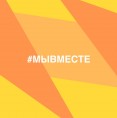- The opening of the exhibition «Russia and the World in the XIX – XXth centuries»
- The opening of the exhibition «Keeping the soul to myself...»
- Museum’s branch on Gorochovaya, 2 is reopened for the visitors
- Exhibition about guerrillas and underground fighters during World War II is opened
- From 27 July the museum will be again opened for visitors!
- Museum and its branches are temporarily closed for all visitors since March 18th, 2020
- The French Ambassador in Russia visited the museum
- Siege graphics: heroism, routine life, memory
- The exhibition dedicated to Soviet women opened in Hanoi
- The opening of the exhibition «A writer of the revolution»
- Главная страница
- -News
- -The opening of the exhibition «Russia and the World in the XIX – XXth centuries»
The opening of the exhibition «Russia and the World in the XIX – XXth centuries»
New permanent exhibition “Russia and the World in the XIX – XXth centuries” opened in The Museum of Political History of Russia. It is dedicated to the connection of Russian and the world’s history. It tells us about historical events from The French Revolution to the end of the XXth century.
The exhibition presents the unique objects, connected with international relations. It shows bullets of the Crimean war period, the collection of medals and other honors, connected with the Russian-Japanese war and the World War I; there’s a rifle which general D.D. Eisenhower gave marshal G.K. Zhukov as a present; there’s also a banner of Spanish workers – the participants of The Civil war in Spain; private effects of the soviet diplomats.
“On one hand, we tell how global world’s processes and separate episodes of national histories influenced on our countries history. On the other hand The Russian revolution of 1917, the dissolution of the Soviet Union and Perestroika also gave a strong impetus to the situation in the world and left a remarkable trail in history” – says curator of the exhibition Andrey Boreyko.
The exhibition begins from the story of “long-term XIX century” – a period of colonial empires, faced to the wave of revolutions and national movements. The Russian Empire was one of guarantor of the Vienna system of international relations, formed in 1814-1815 years. Nevertheless, the principle of “the balance of power” hadn’t become vector of peace – grew contradictions, which resulted into the world war.
Russia entered The World War I as empire, and emerged from it as a Socialist Republic. First after-war years the soviet government was outside the framework of existing system of international relations and struggled for diplomatic recognition. The new Versailles-Washington order wasn’t stable and the League of Nations couldn’t become a guarantor of peace.
World War II had become a test for all inhabitants of the planet. After it the Soviet Union had become one of the poles of Yalta-Potsdam system of international relations, and second half of the XXth century had been dominated by the super-power standoff. However, it was impossible to keep fragile peace. New international institutions, main place of which was taken by The United Nations, contributed that. The exhibition ends with the dissolution of the Soviet Union and socialist bloc – the main geopolitical turmoil of the end of the XXth century.
In the center of the hall visitors can use the interactive guide of the world history of the end of the XVIII - beginning of XXI century, which demonstrated more than 200 events - from The American Revolutionary War to The Arab Spring.
The exhibition is supplemented by short animated film “Russia and the world in the XIX-XXth centuries”.
















